Paşabağ Valley, also known as Monks Valley, is one of Cappadocia’s most instantly recognizable landscapes. Its towering, mushroom-shaped fairy chimneys stand like sentinels over a timeless terrain, each one carved and shaped by centuries of erosion and human history. This unique valley draws visitors from all over the world, not only for its spectacular geology but also for the ancient dwellings and chapels carved into the rock.
If you’re planning your Cappadocia itinerary, Paşabağ is a must-see stop—and many local tours conveniently include it. The popular Red Tour route, for example, almost always visits Monks Valley. We enjoyed this combined Red & Green Tour, which included a stop.
A landscape unlike any other
Paşabağ Valley is famed for its fairy chimneys—tall, naturally formed rock spires topped with large, rounded caps that give them their characteristic "mushroom" appearance. The rock formations here are especially striking due to their size and the sheer number clustered together. Over thousands of years, wind and rain sculpted the volcanic tuff into these surreal shapes, while the harder basalt rock on top protected the softer layers beneath from eroding away.
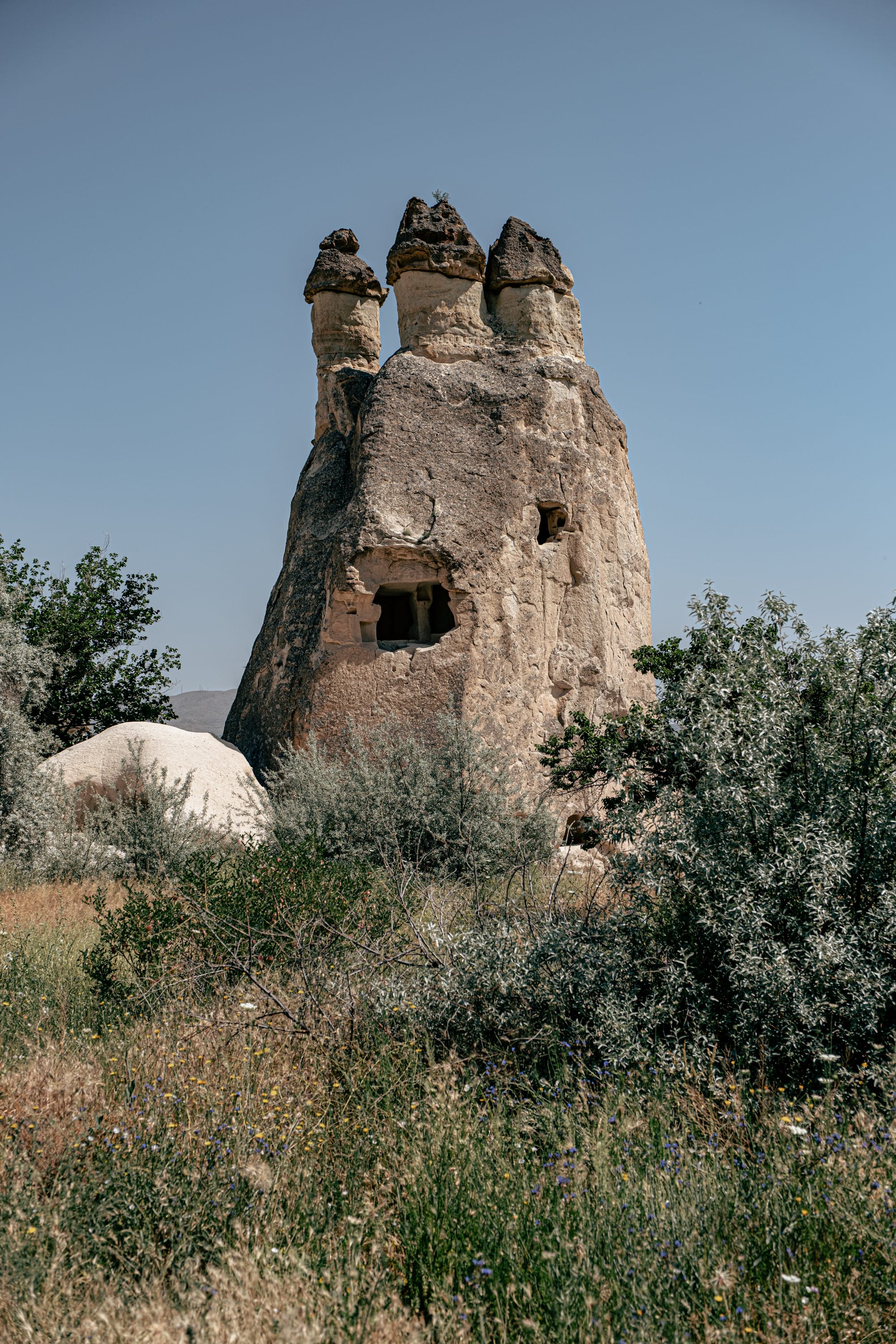
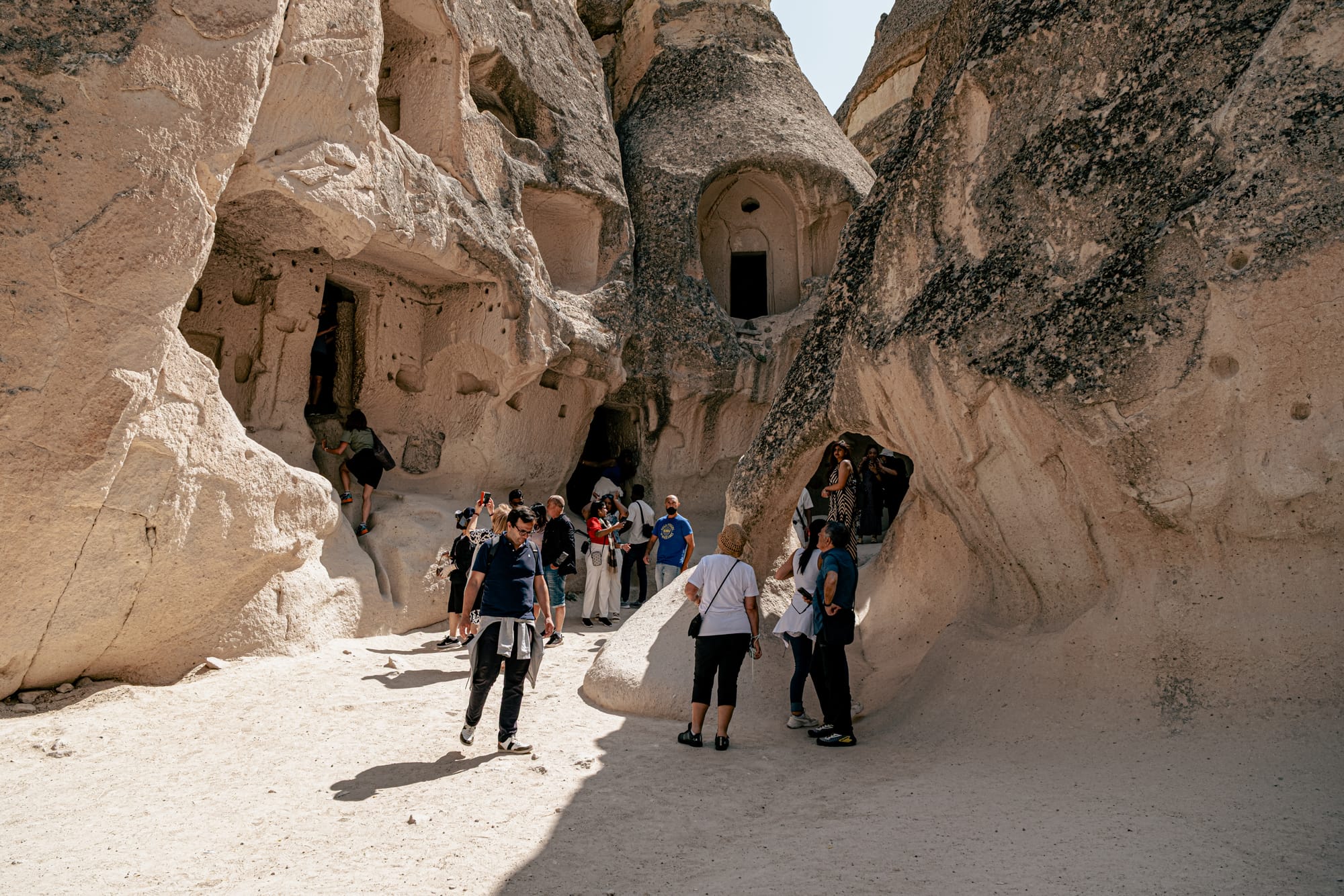
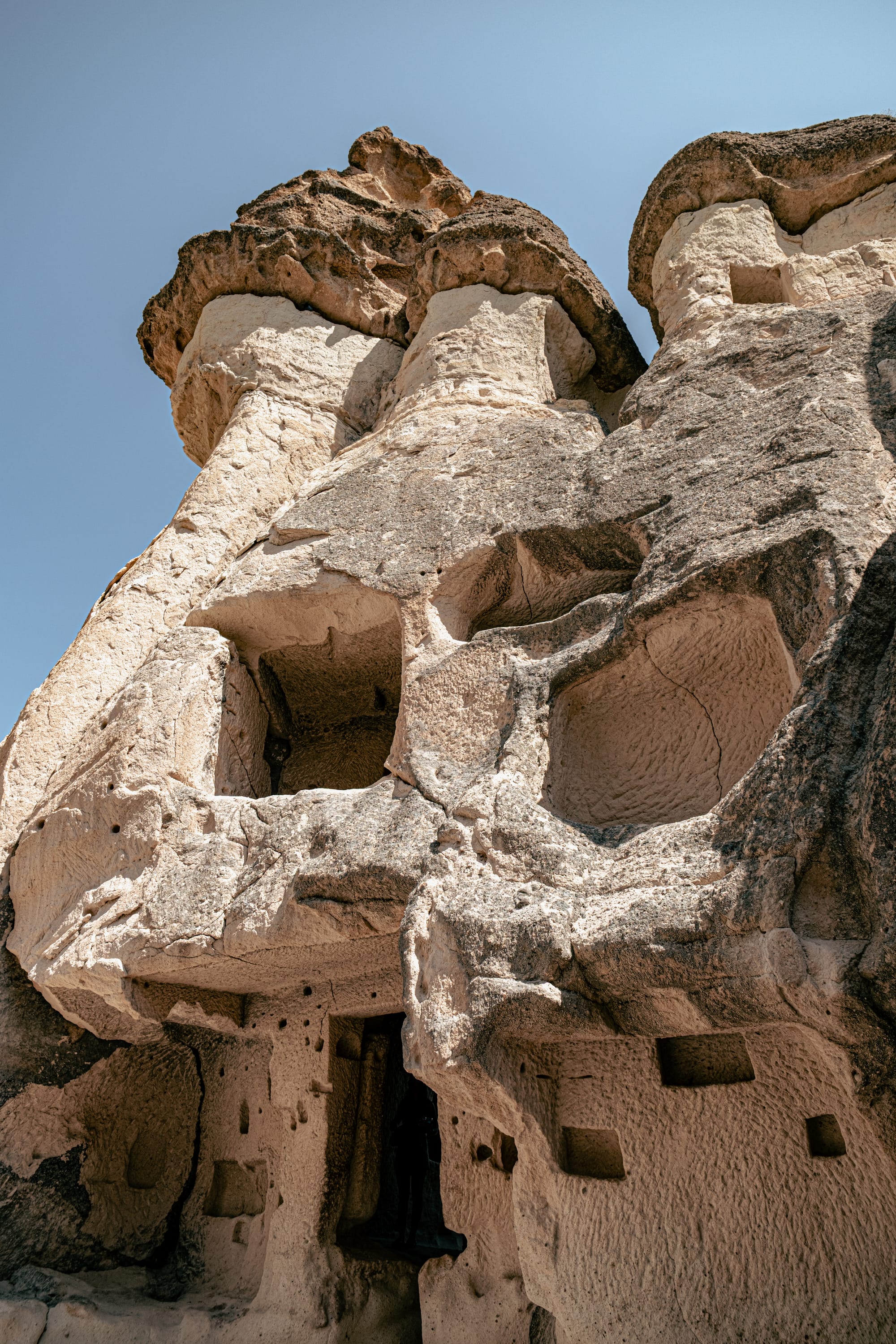
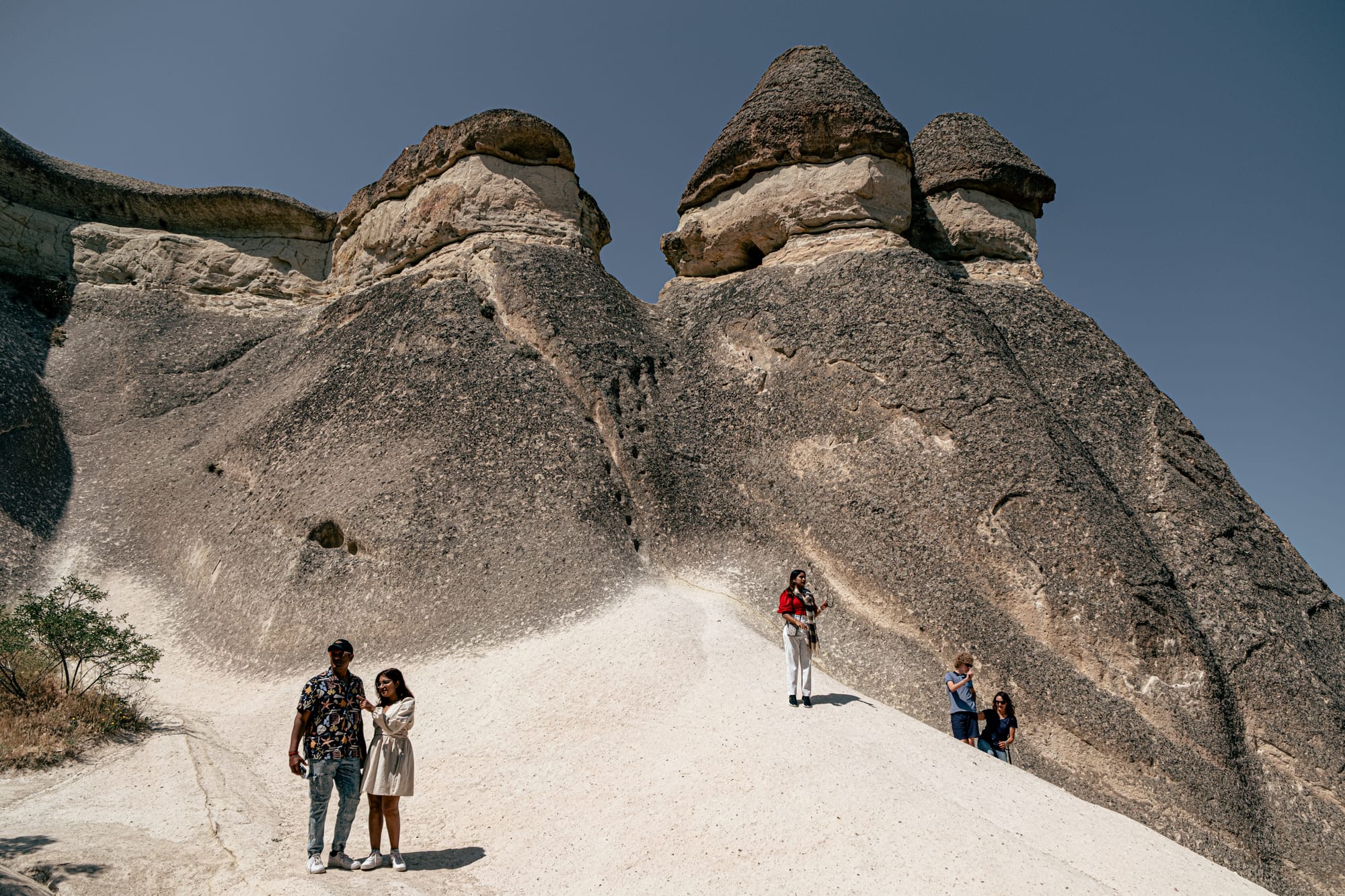
Visitors exploring the rock-carved chapels and dwellings of Paşabağ (Monks Valley) in Cappadocia
Walking into the valley feels like stepping into another world. The formations rise dramatically against Cappadocia’s open skies, with earthy tones that shift from pale cream to deeper ochres in the changing light. You’re free to wander the pathways, get up close to the formations, and even step inside some of the ancient carved rooms.
An otherworldly atmosphere
Part of Paşabağ’s magic lies in the way it seems to belong to another planet entirely. As you walk through the valley, the strange, sculptural rock forms loom overhead like monuments from an alien world.
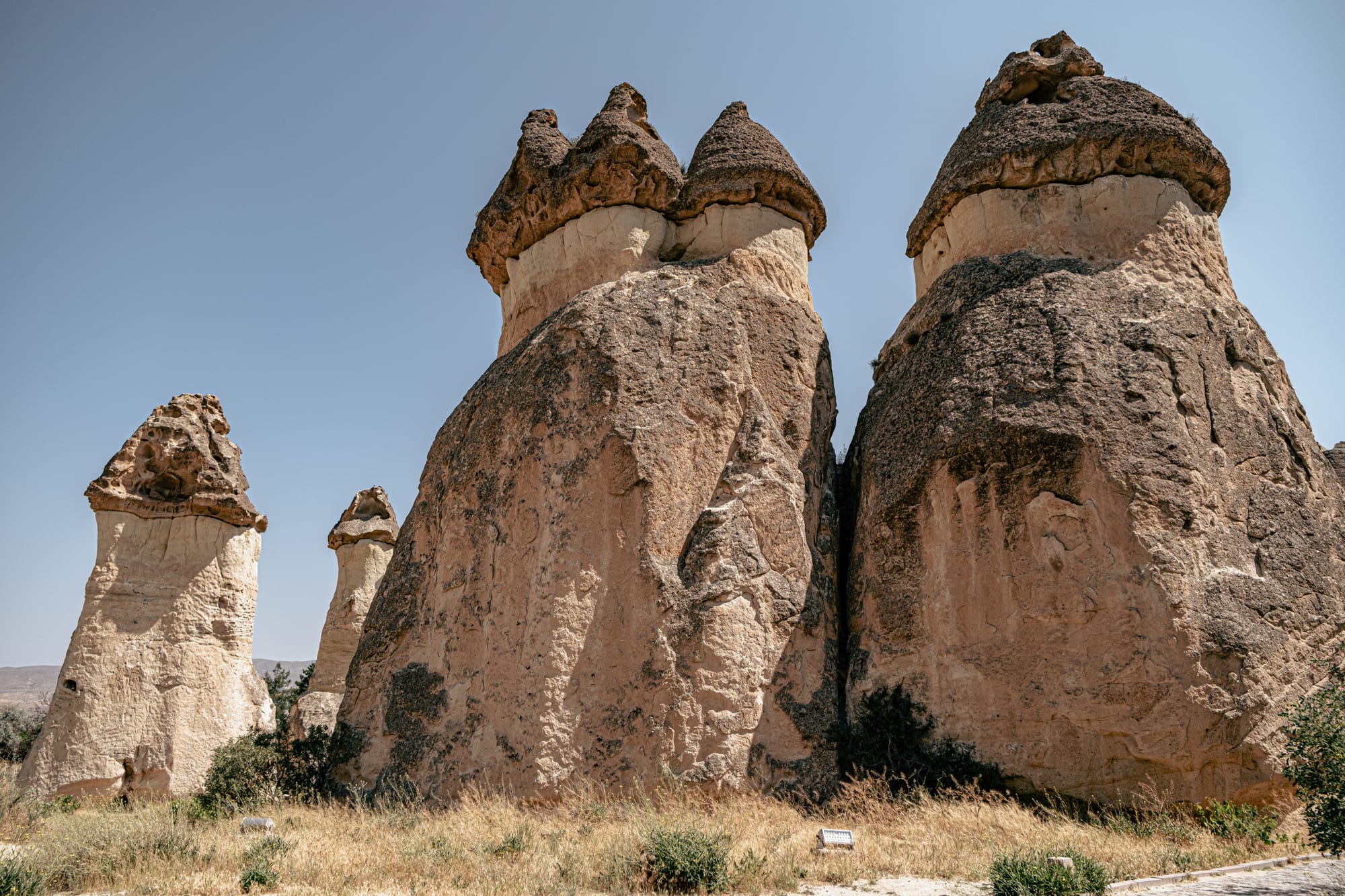
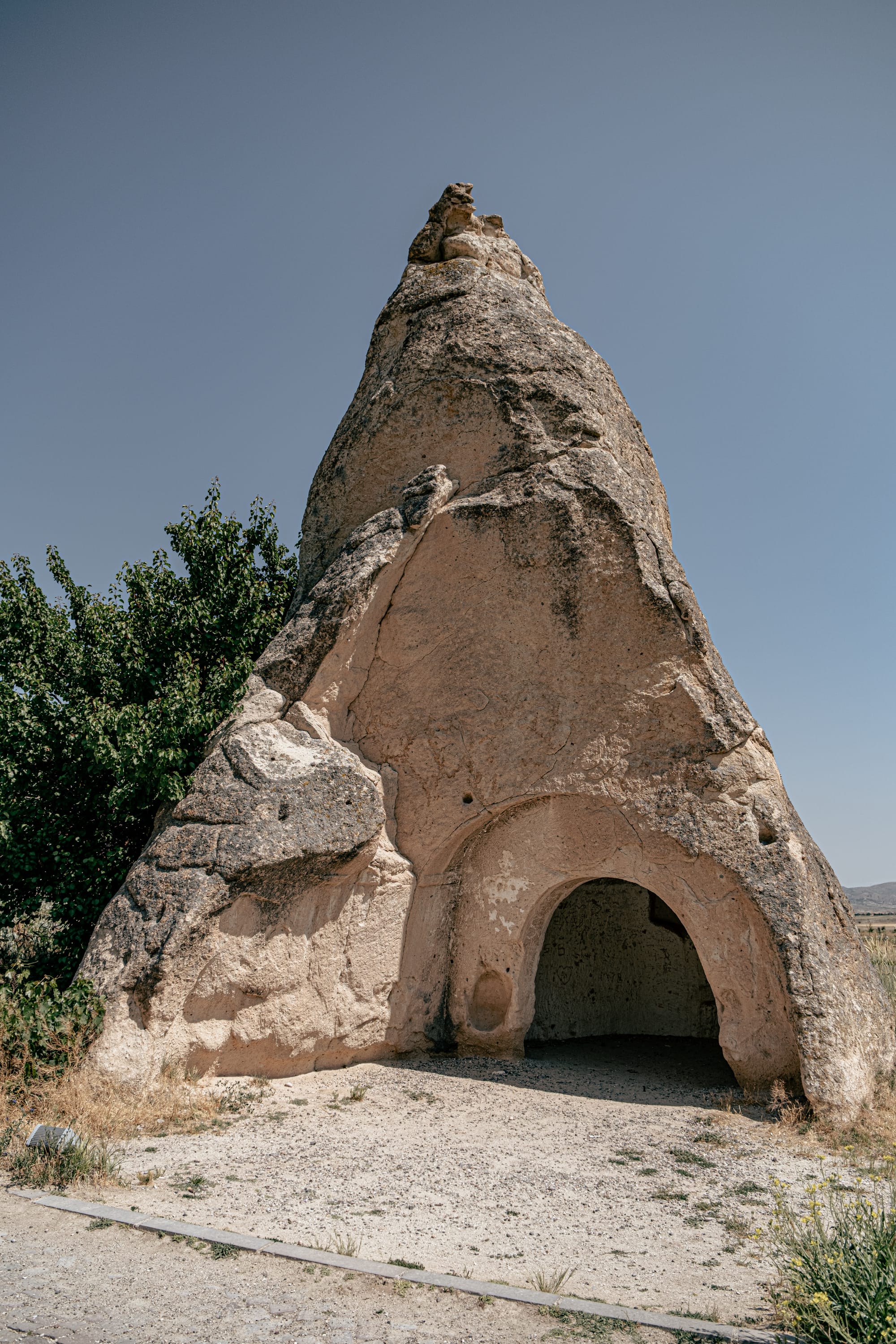
Fairy chimneys and carved chapel entrance in Paşabağ, showcasing Cappadocia’s unique volcanic rock formations
The quiet is broken only by the crunch of gravel underfoot or the wind brushing past the stone, amplifying the sense of being far removed from the everyday.
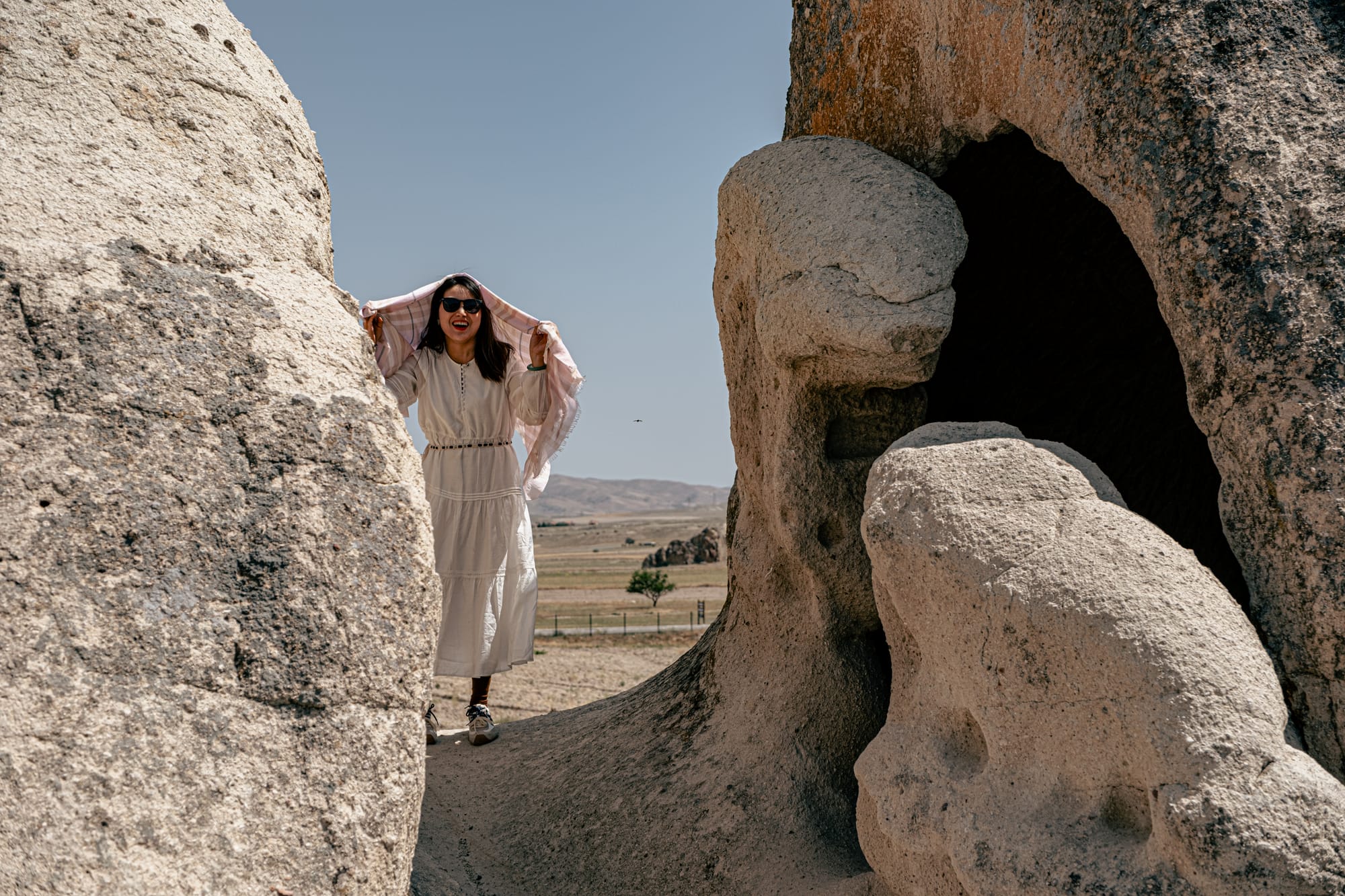
In the softer light of morning or evening, the fairy chimneys take on an almost ethereal glow, and the play of shadows between their towering shapes makes the whole valley feel alive.
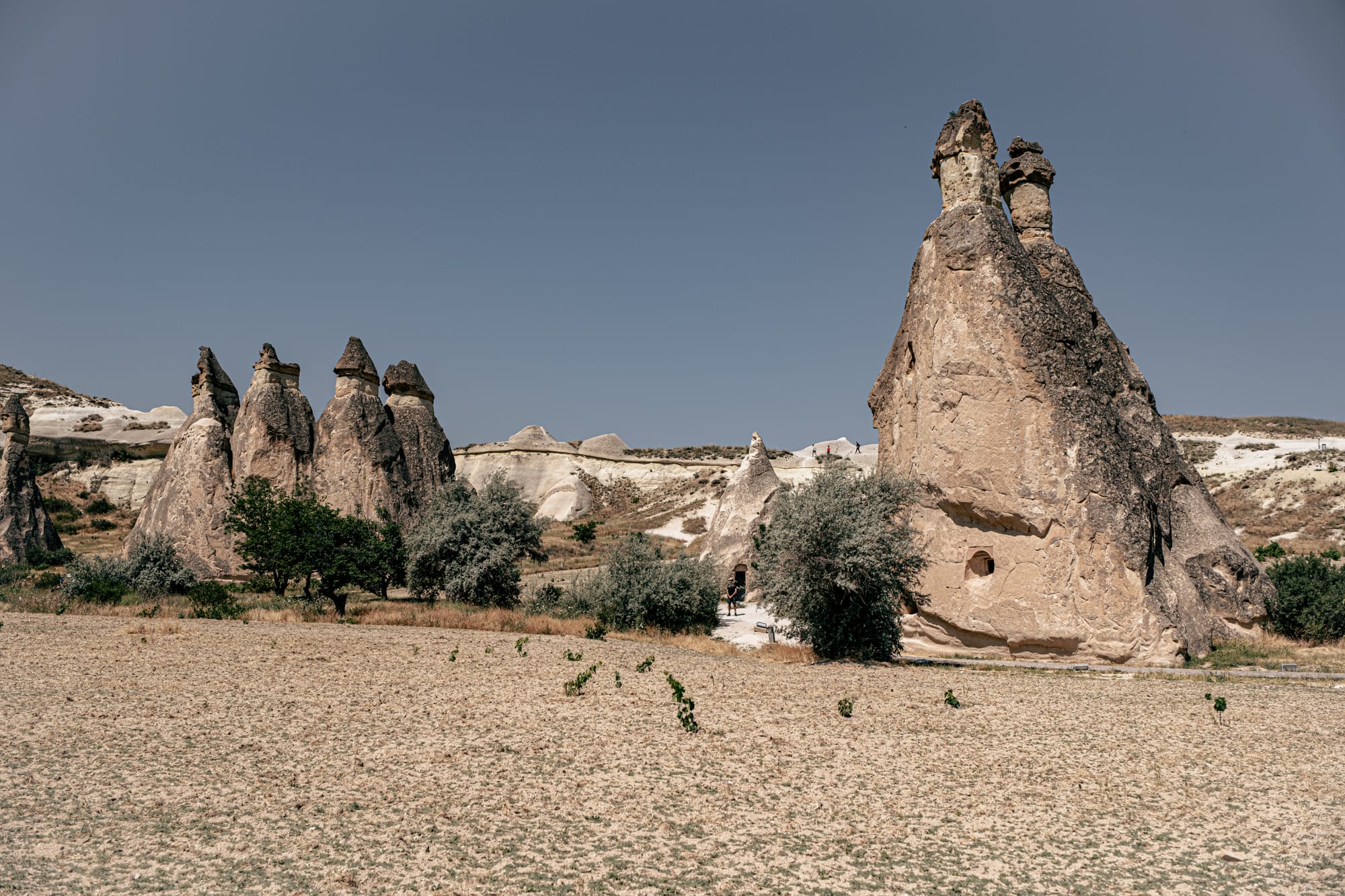
The winding trails reveal new angles and perspectives with every turn. You might find yourself dwarfed by a single, massive formation or surrounded by clusters of chimneys that create natural corridors and open plazas. The more time you spend here, the more you start to notice the subtle details—the colors shifting with the sun, the tiny plants sprouting from crevices, the way the rock holds the heat of the day.
History and the monks
The name "Monks Valley" comes from the hermits and monks who once retreated here for solitude and prayer. Over the centuries, they carved dwellings, chapels, and even small monasteries into the fairy chimneys. These rock-hewn sanctuaries provided both shelter and a spiritual refuge.
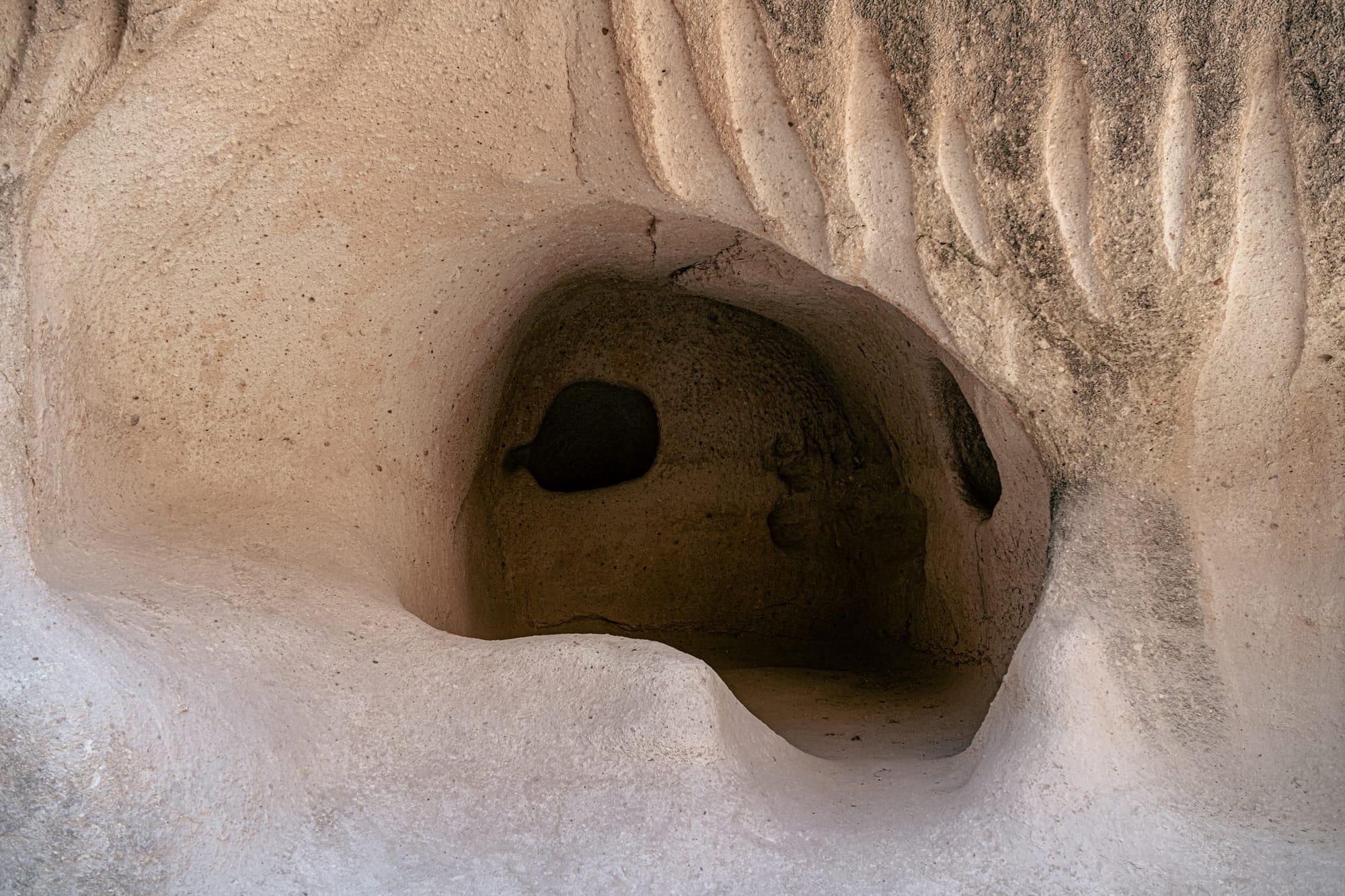
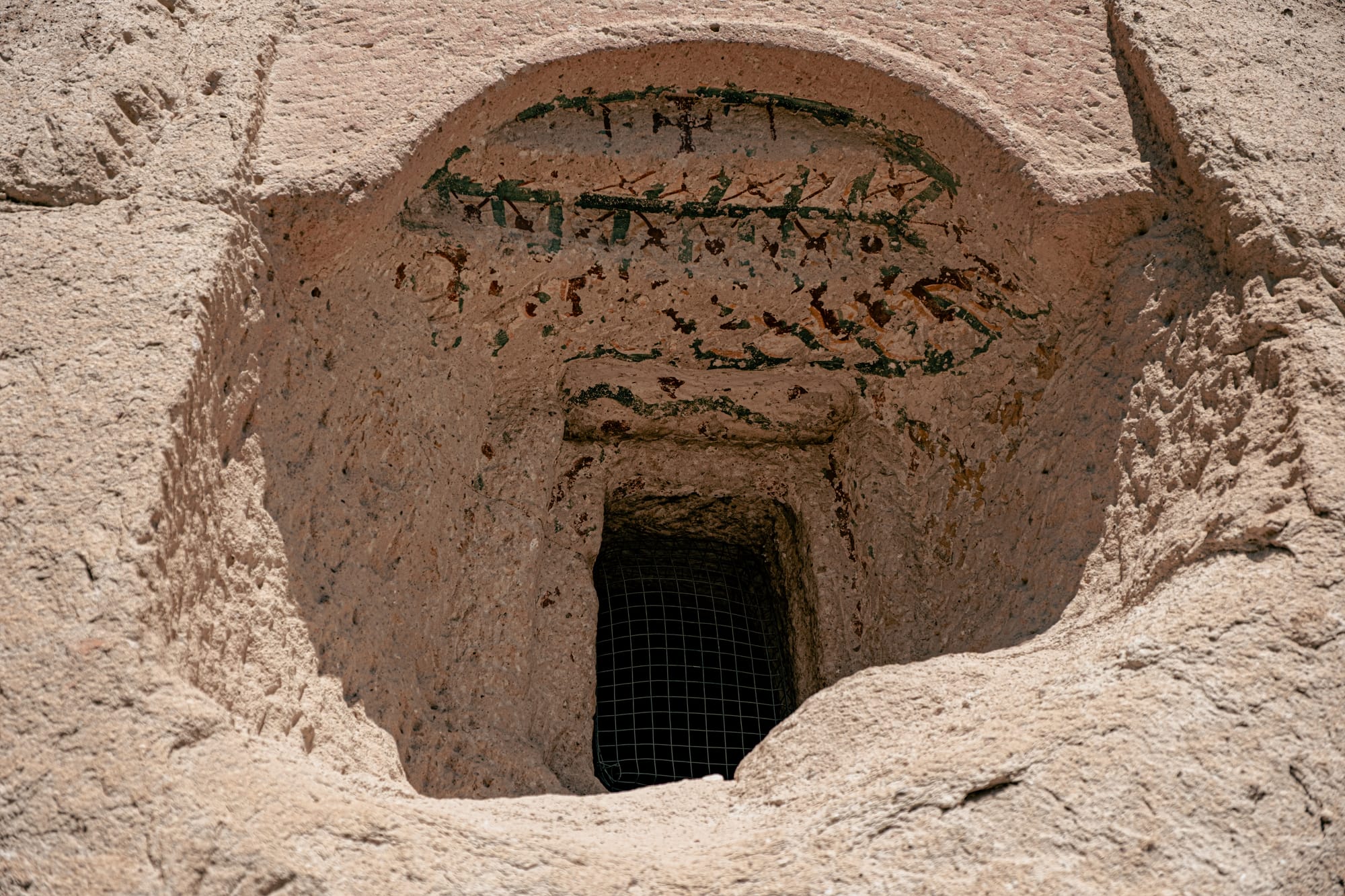
Interior cave space and entrance with faded frescoes in Paşabağ’s rock-carved chapels
One of the most notable sites within Paşabağ is the Church of St. Simeon, a modest but historically significant chapel tucked into one of the formations. According to local tradition, St. Simeon lived in seclusion here, and the church became a place of devotion for others following his example. Today, you can step inside and see remnants of these spaces, with entryways and staircases cut directly into the rock.
What you’ll see
Exploring Paşabağ is a feast for the senses. Mushroom-shaped formations rise in clusters, some standing alone in the open plain and others packed closely together. Rock-carved dwellings and chapels feature arched entrances, interior chambers, and small windows cut into the stone. The surfaces range from smooth, wind-polished planes to rough, pitted areas that reveal volcanic layers.
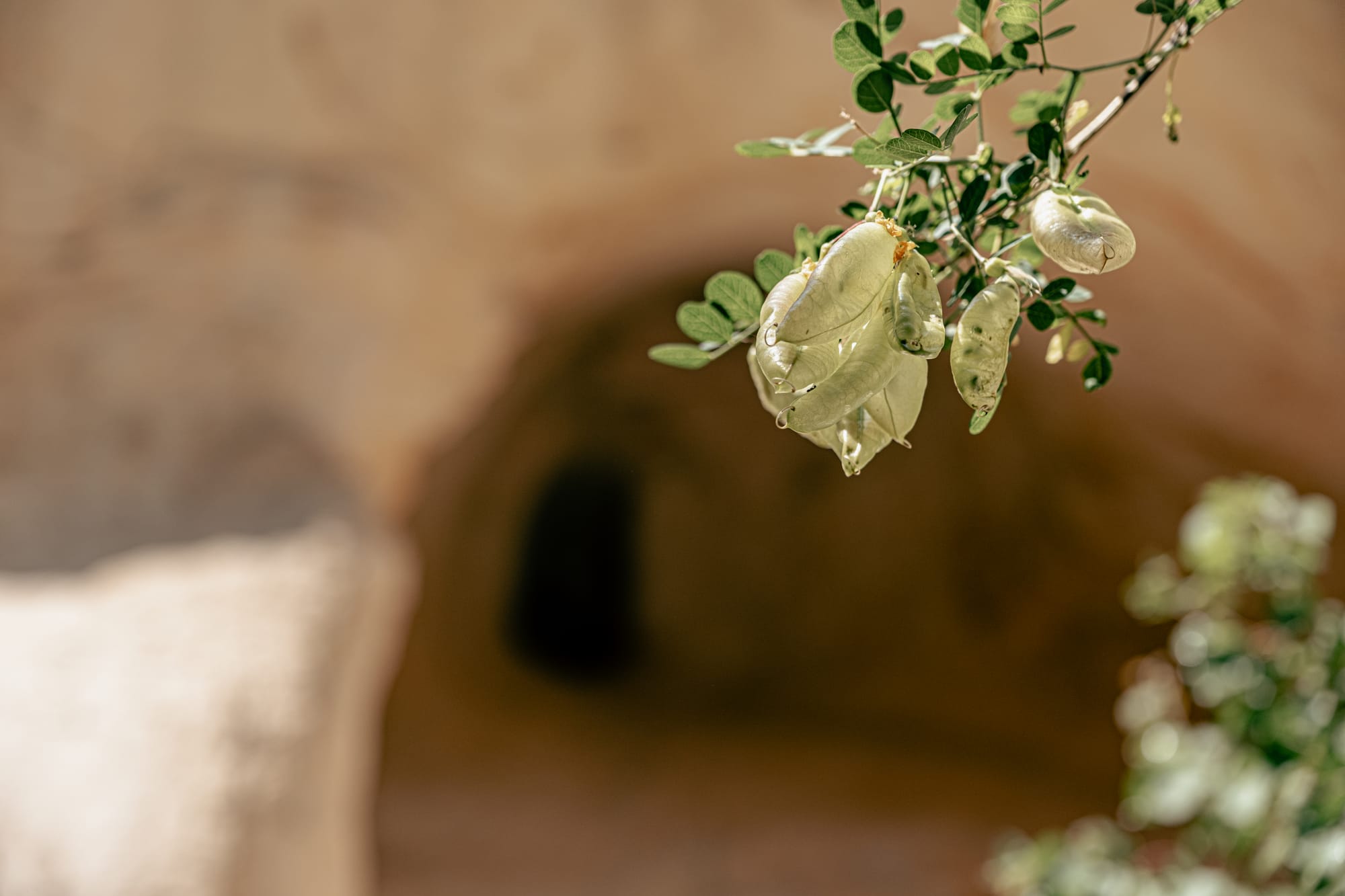
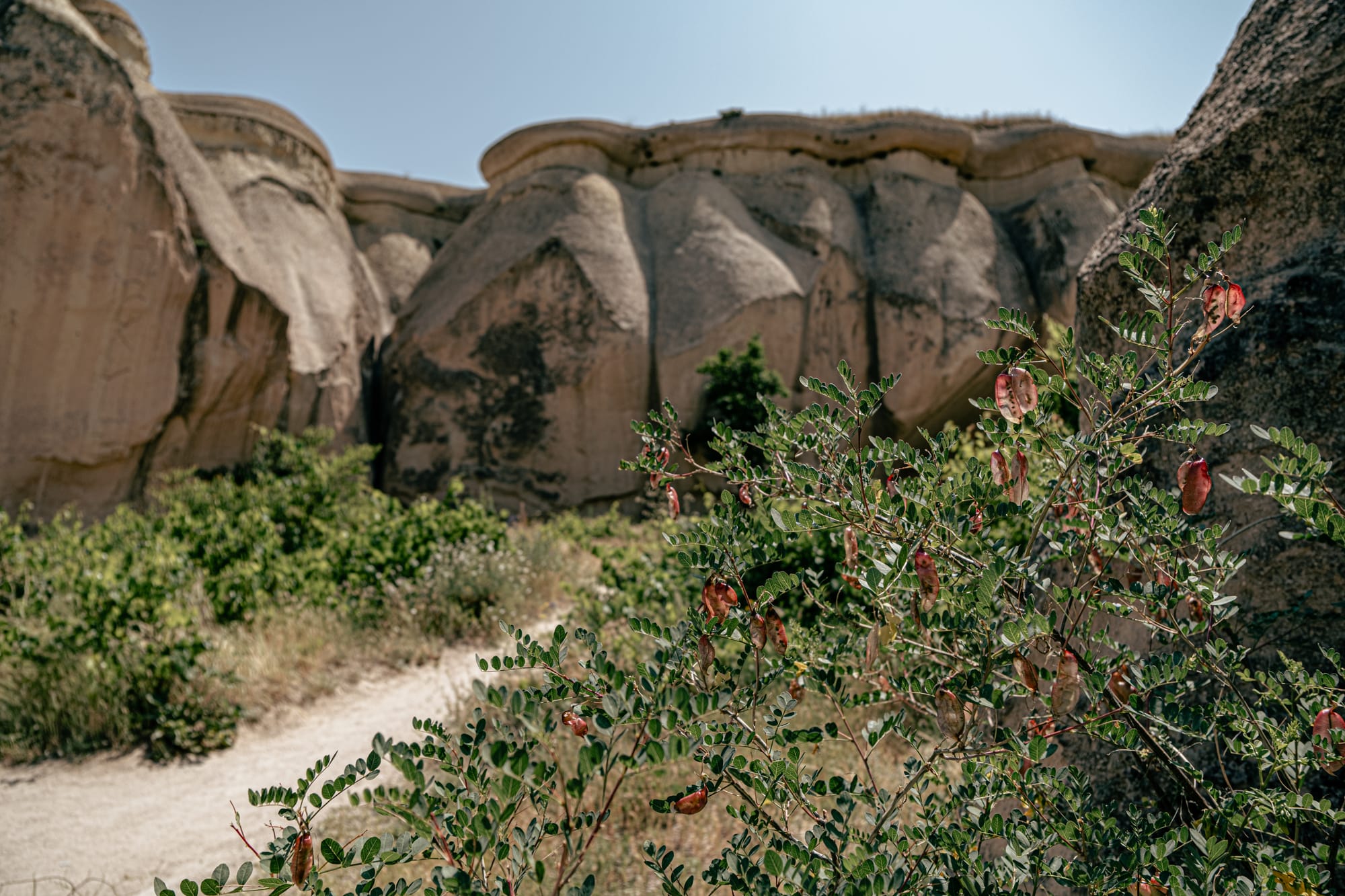
Seed pods and greenery growing among the rock formations in Paşabağ
In spring and summer, the valley blooms with hardy wildflowers such as yellow daisies, purple thistles, and delicate white blossoms. Small lizards sometimes bask on warm stones, and you may hear the calls of local birds. Visitors can wander freely, climbing stone steps into the carved rooms or simply pausing to take in the sweeping views.
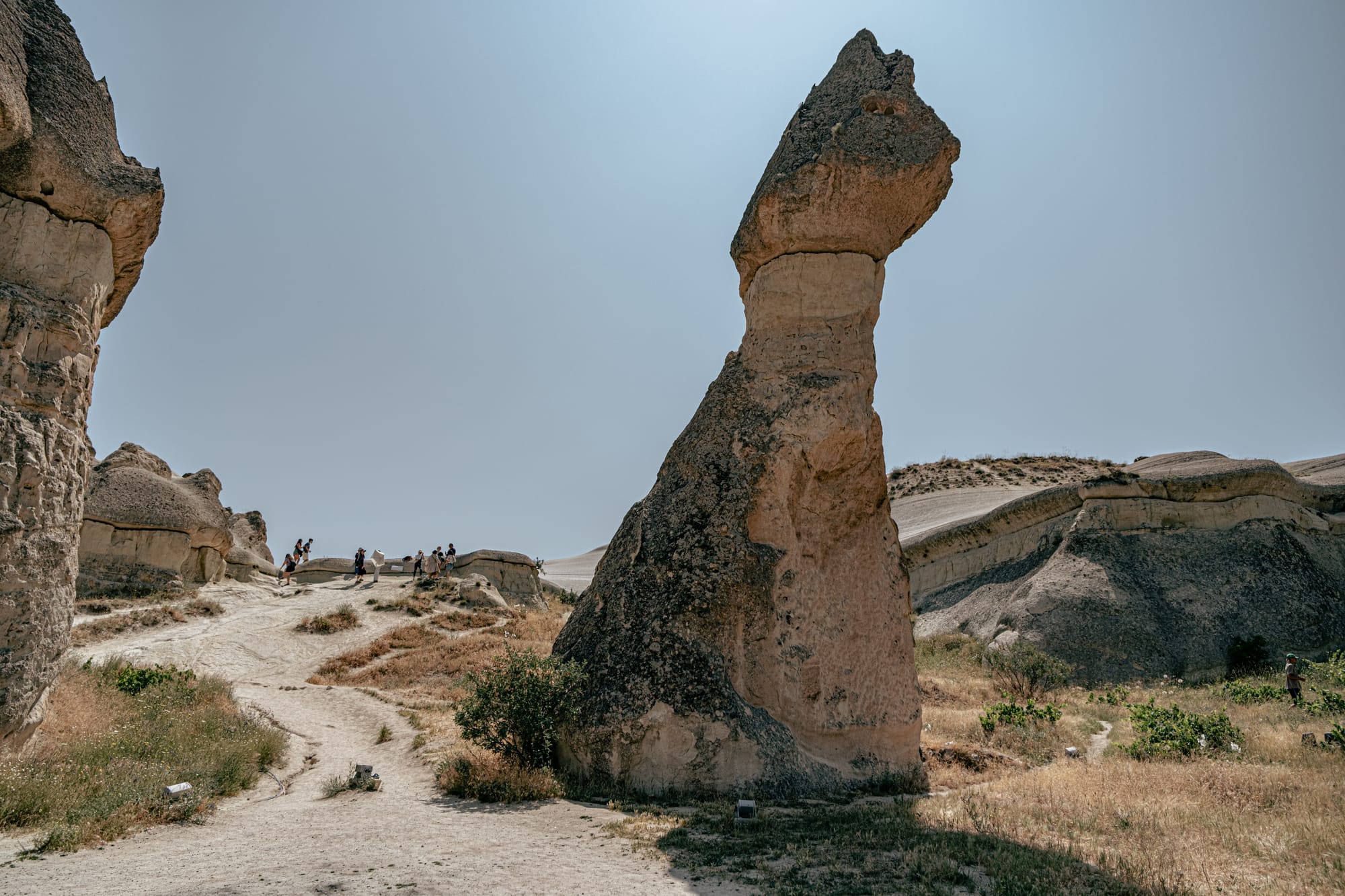
From below, the fairy chimneys tower dramatically overhead, while from higher ground you can take in panoramic views of the surreal terrain.
Flora and fauna highlights
While the fairy chimneys are the main attraction, Paşabağ is also home to a surprising variety of plant life. In spring and summer, the valley comes alive with splashes of yellow, purple, and white from native wildflowers. These blooms grow among hardy shrubs and grasses adapted to the rocky, arid conditions.
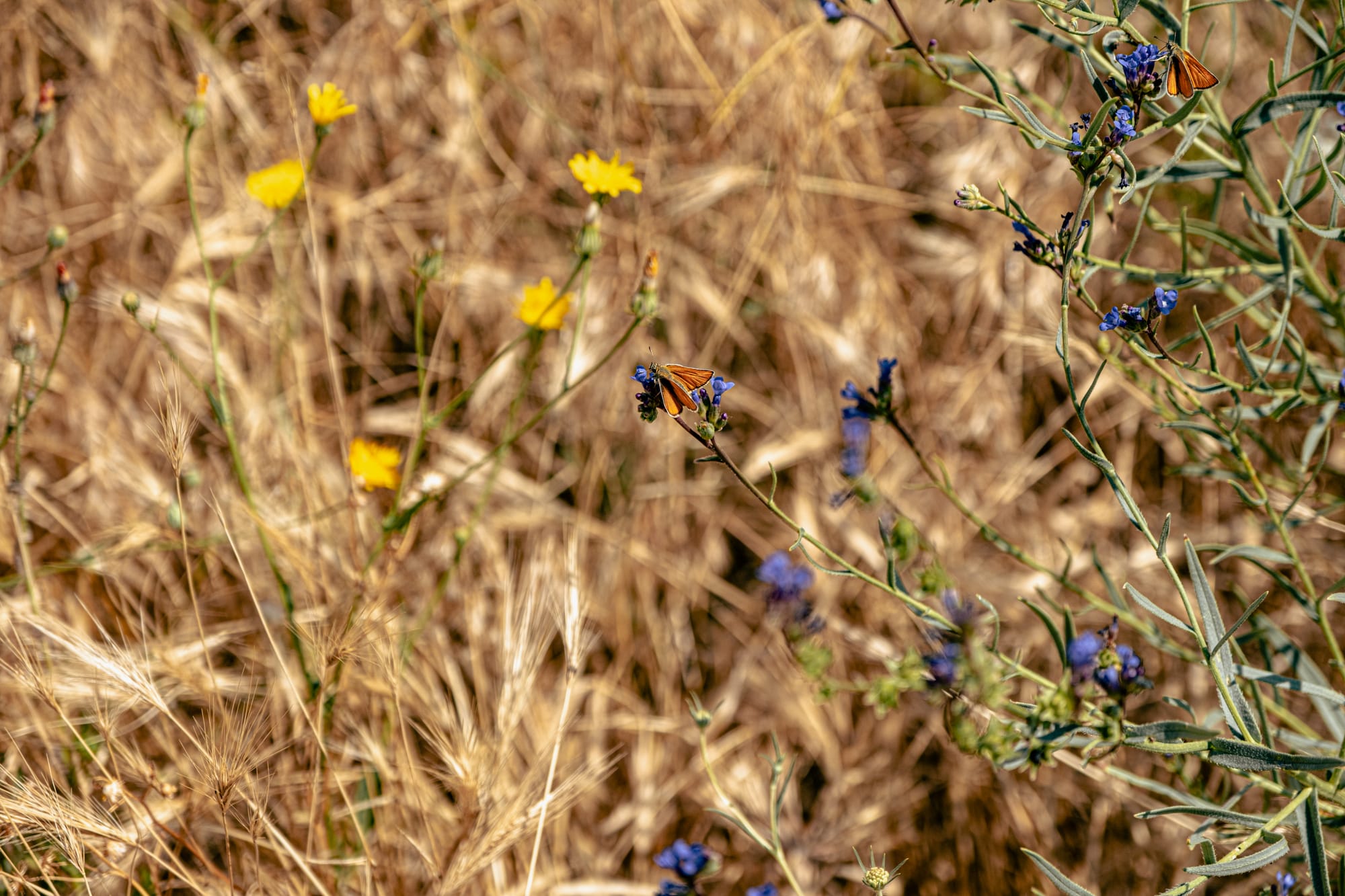
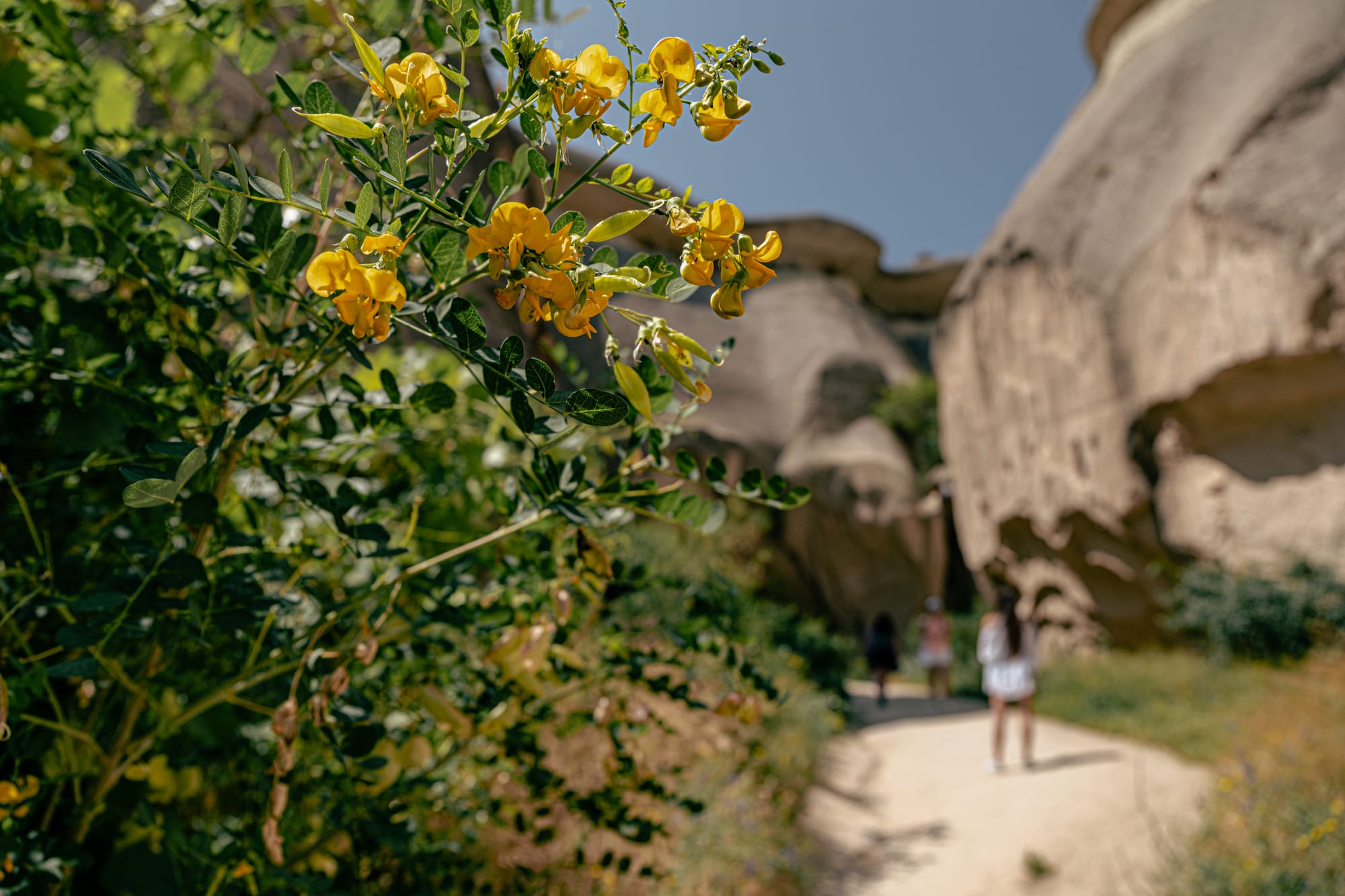
Wildflowers and butterflies adding vibrant color to Paşabağ’s rocky landscape
Wildlife sightings are less common during the heat of the day, but early risers may spot small reptiles or hear the calls of birds nesting in crevices.
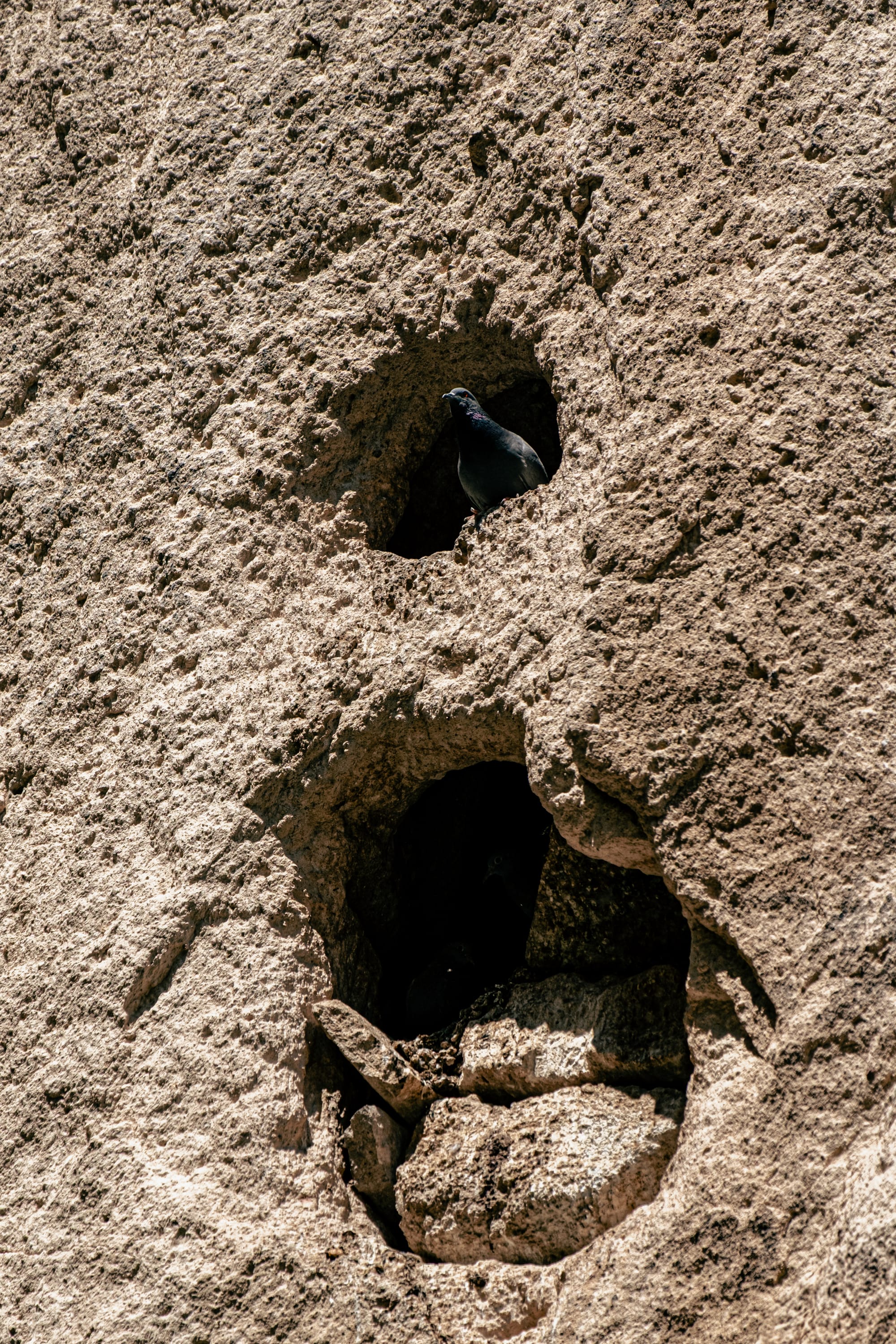
The combination of geology and biodiversity makes Paşabağ a rewarding visit for both nature lovers and history enthusiasts.
Photography opportunities
Paşabağ is a dream for photographers. The interplay of light and shadow across the textured rock surfaces changes throughout the day, offering endless composition possibilities. Mornings often bring a gentle glow to the formations, while afternoons can create dramatic contrasts.
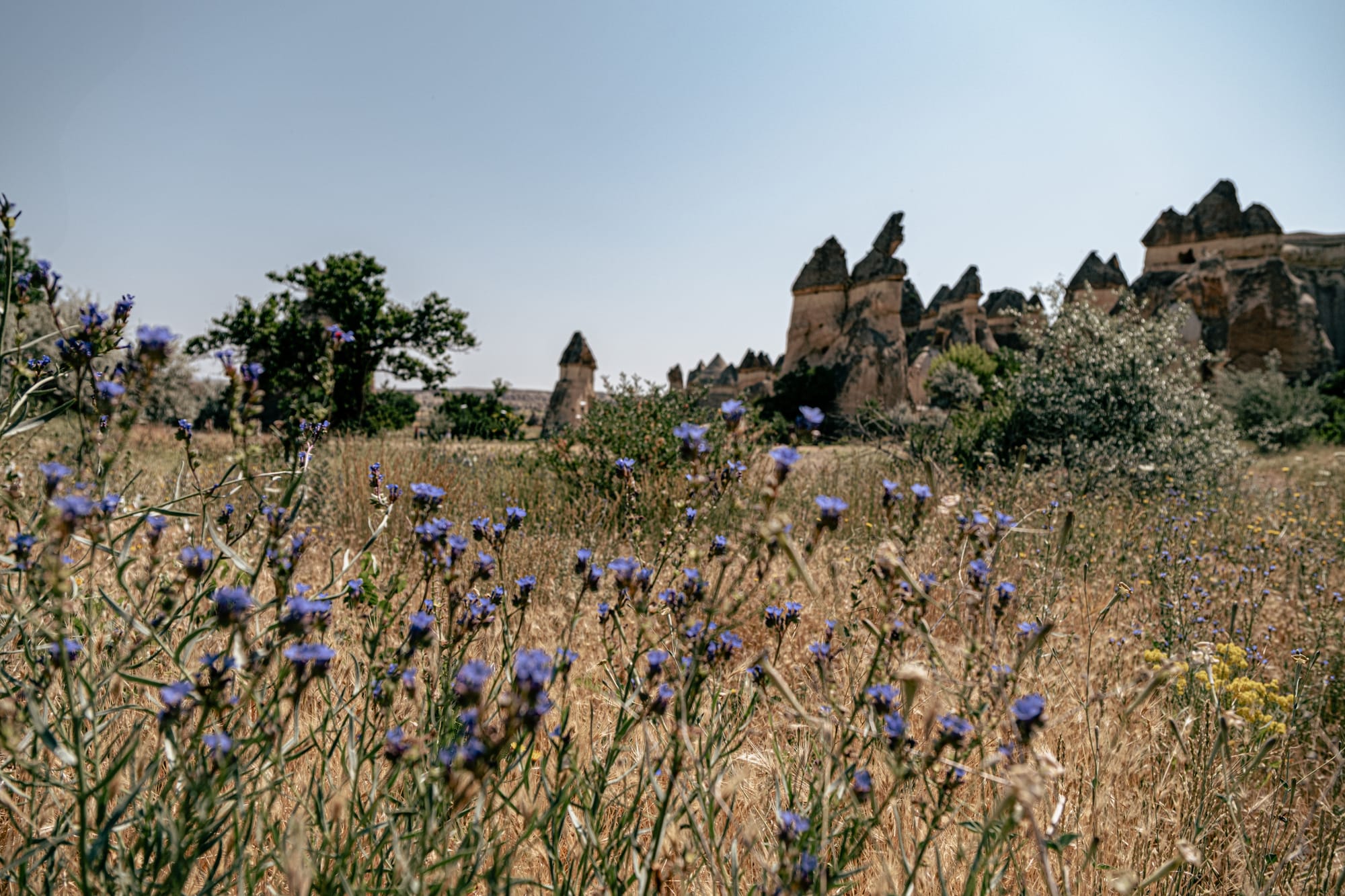
It’s worth taking the time to frame shots that include both the geological features and the human element—travelers climbing into cave dwellings, or standing dwarfed by the towering chimneys. Wildflowers in the foreground can add depth and seasonal character to your images.
How to get there
Paşabağ is located a short drive from both Avanos and Göreme, making it easy to include in a day of sightseeing. If you’re not renting a car, joining a tour is the most convenient option. Many tours also stop at nearby attractions like Zelve Open-Air Museum, Devrent Valley, and Avanos pottery workshops.
Visiting tips
There is a small admission fee to enter Paşabağ Valley, which helps with its upkeep, and it’s worth checking in advance if this is included in your tour price.
Arriving early in the morning or later in the afternoon means softer light for photography and cooler, more pleasant walking conditions.
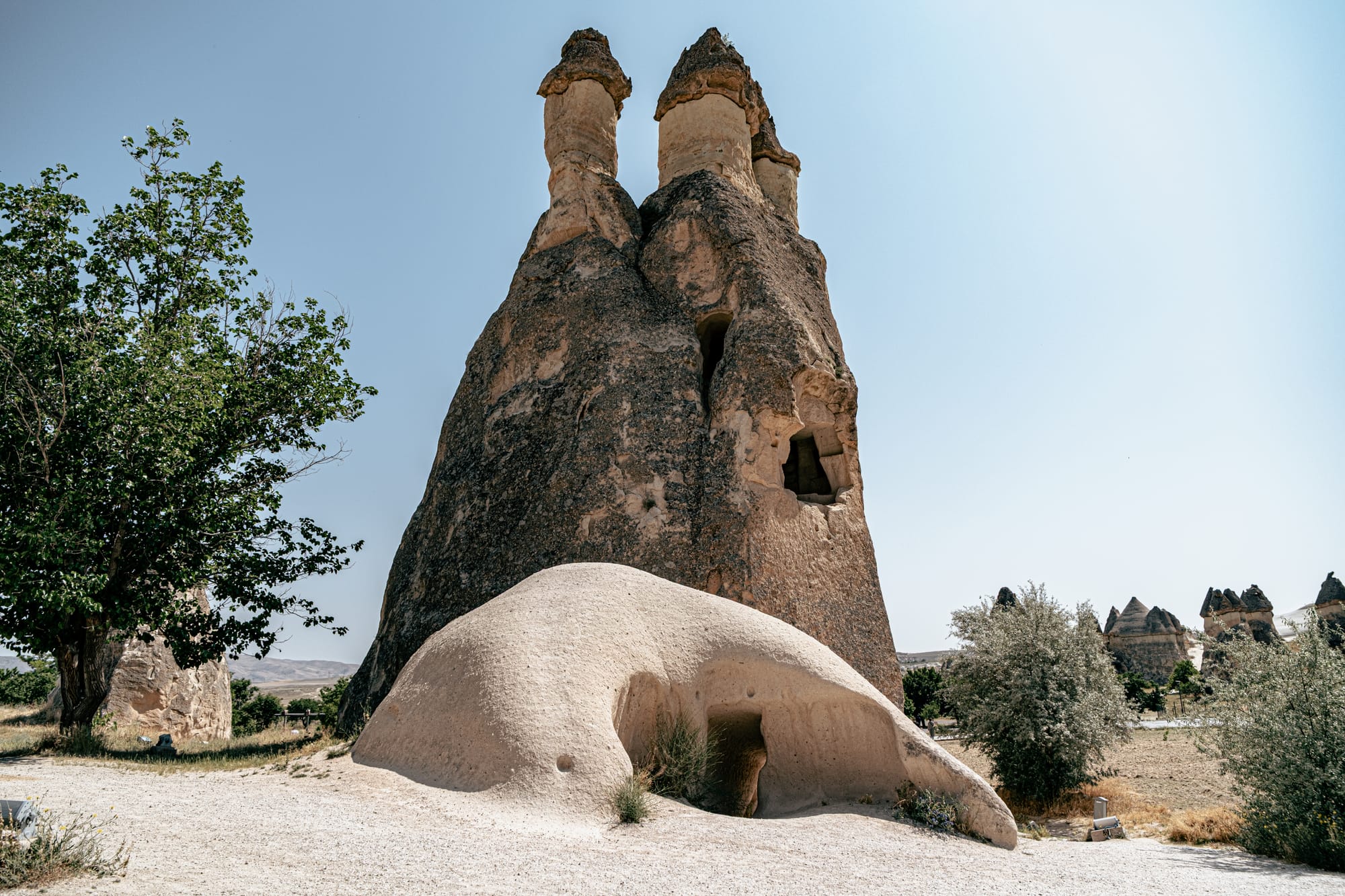
Wear shoes with good grip, as some paths are uneven and the carved stairways can be steep. Take your time and wander beyond the busiest areas — quieter corners of the valley often reveal some of the most photogenic formations. Be mindful of the site’s fragile history, and avoid climbing in areas where the rock could be damaged.
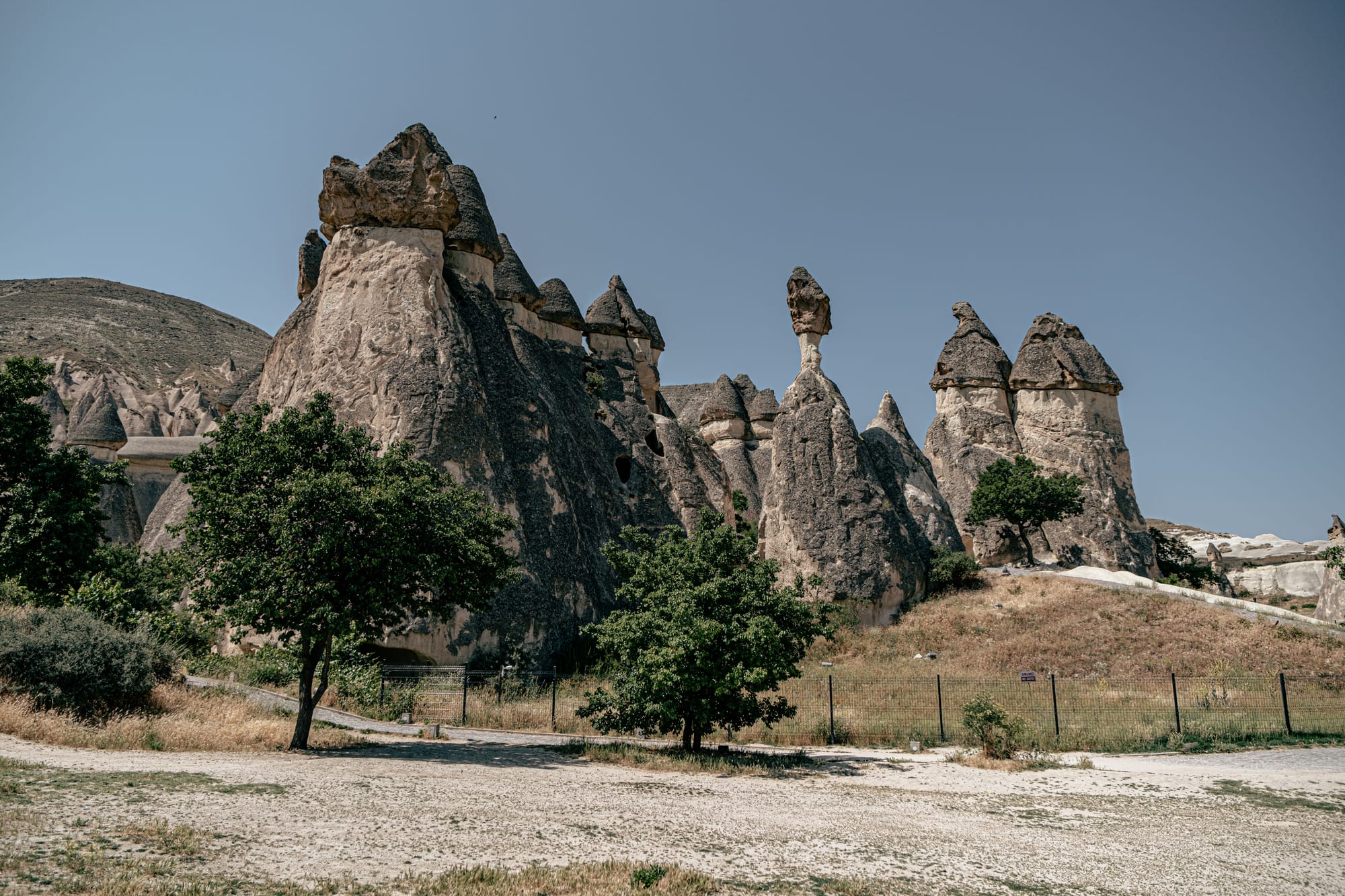
For photographers, a wide-angle lens is ideal for capturing the grandeur of the formations. That said, don’t overlook close-up details—carved doorways, wildflowers, and the textures of the volcanic rock can make for striking shots.
Lasting impressions
Paşabağ is one of Cappadocia’s most photogenic and historically rich destinations. Its forest of mushroom-shaped fairy chimneys, intertwined with human-carved spaces, tells a story of both nature’s artistry and human adaptation. Whether you’re marveling at the rock formations, stepping into the humble Church of St. Simeon, or simply wandering among the wildflowers, the valley offers a multi-layered experience.
For those short on time, joining a guided tour is the best way to see Paşabağ and nearby highlights without worrying about logistics. This is the one we did, and we would definitely recommend it. It also stops at Özkonak Underground City, Pigeon Valley, and Göreme Open Air Museum.






